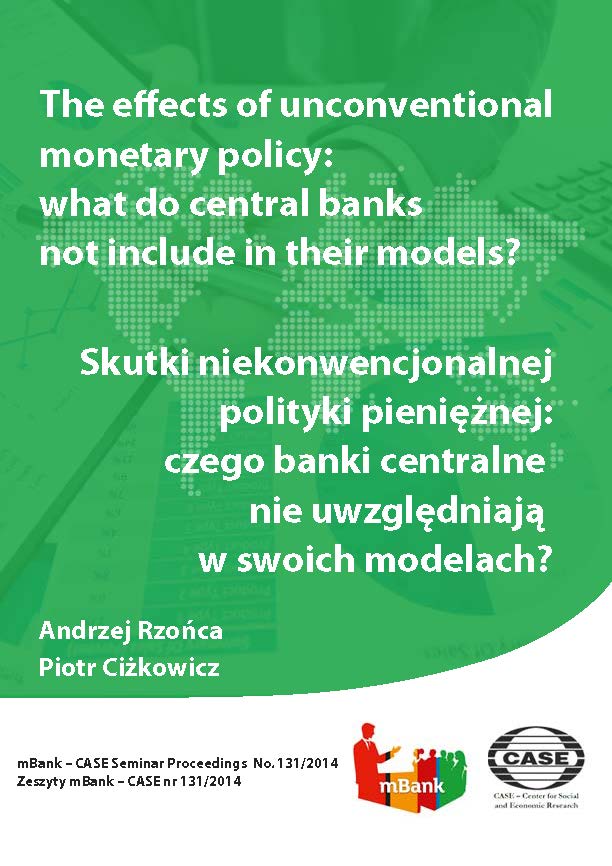 Homepage CASE
Homepage CASE
Selected values

131st mBank-CASE Seminar Proceedings: The effects of unconventional monetary policy: what do central banks not include in their models?131st mBank-CASE Seminar Proceedings:
-

Andrzej Rzońca
Professor at the Warsaw School of Economics, with a postdoctoral degree in the economic sciences, Andrzej Rzońca is also a member of supervisory boards of commercial law companies. His positions held to date have included president of the board of the Association of Polish Economists, member of the Monetary Policy Council (third term), chief economist … <a href="https://case.dev10.pro/publications/131st-mbank-case-seminar-proceedings-the-effects-of-unconventional-monetary-policy-what-do-central-banks-not-include-in-their-models131st-mbank-case-seminar-proceedings/">Continued</a>
Articles from this author:
-
144th mBank-CASE Seminar Proceedings: On Economic Growth in Europe, or, The Uncertain Growth Prospects of Western Countries
Growth in the European Union since the outbreak of the global financial crisis is slower (1) than before the crisis, (2) than the trend would indicate, (3) than forecast and (4) than in the United States. The factors driving its weakness lie more on the supply side than the demand side. The loss of potential … Continued
-
144th mBank-CASE Seminar Proceedings: On Economic Growth in Europe, or, The Uncertain Growth Prospects of Western Countries
-
Piotr Cizkowicz
In 2009, for the first time since the end of World War II, the world economy shrank. This resulted from the economic downturn in highly developed countries and surprised most economists. According to the IMF forecast published in spring 2008, GDP growth in these countries was expected to accelerate from 1.3% in 2008 to 3.8%. In fact, the growth rate was 0.1% in 2008 and minus 3.7% in 2009 (White, 2012). Another surprise was the subsequent poor performance rates reported by the major economies, i.e. the United States and the Eurozone. Five years after the acute phase of the global financial crisis their growth rates have not returned to pre-crisis levels.
In a response to the outbreak of the global crisis, the main central banks, namely the Fed and the European Central Bank (ECB), resolved to take some unconventional actions: (i) reducing interest rates to close to zero, (ii) committing to keep interest rates that low for a long time, (iii) introducing quantitative easing on a large scale. In this paper, the authors attempt to aswer what were the costs of the unconventional monetary policy adopted by Fed and EBC, as well as what effects it had on restructuring process, uncertainty, and the use of credit.
Related publications
Thanks for joining us!
You're now part of a community that values [your newsletter's focus]. Get ready to stay informed, inspired, and engaged with our carefully curated content.
